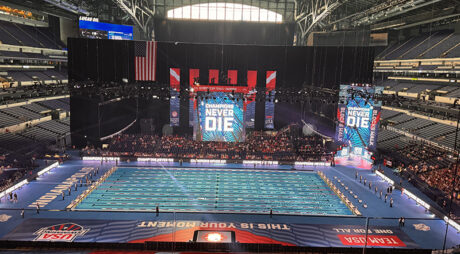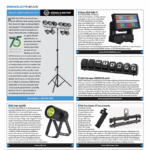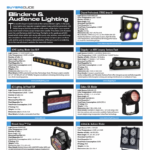
“You have to make it look like it belongs.” This was Mark Dodd’s mantra in putting a 50m swimming pool in a football stadium, plus two more warm-up pools behind a floor-to-ceiling curtain hung at the 50-yard line. And if you were one of the 23,000 spectators (a record) watching the USA Olympic Swim Trials live or one of the 3.13 million television viewers (also a record) watching on NBC, you would agree that the goal was achieved.
The numbers are daunting. From June 15 to 23, nearly 1,000 swimmers competed for 52 spots on the U.S. Olympic team inside Lucas Oil Stadium in Indianapolis, the home of the Indianapolis Colts. Over 54,000 sq. ft. of elevated deck was put in place. Over 40,000’ of steel cable was involved, including what was needed to hang a custom-made scoreboard. There were 450 sections of handrails and 2,000 sheets of ¾” plywood needed. Nearly two million gallons of water was brought in from the White River [having been treated prior to use in the pools]. They built a six-story athlete entrance of LED panels in addition to LED panels found everywhere else throughout the stadium. “There’s just a lot of stuff,” Dodd exclaims after running through the list. It was realized by Indianapolis-based Dodd Technologies, which has been part of almost all of these Olympic swimming trial events since 1992.
World’s Largest Natatorium
Recalling those first Olympic trials he worked in the 1990s, Dodd says they were lucky to be able to put 3,000 people in a venue. They were part of the one held in Omaha in 2008, when they first worked with Italy-based Myrtha Pools, who constructs temporary pools all over the world. That Omaha build allowed them to get up to 12,000 spectators in the room—then a record. Starting in 2017, conversations ensued about what could be done to create an event where even more fans could be in the room. When the “what if?” conversations turned to building something inside a football stadium, “obviously Lucas Oil Stadium was the place to do it, making this the first time an Olympic-sized pool was built in an NFL stadium,” Dodd says. The planning and the coordination had to be precise. All lighting, video, automation, and audio components had to be put in place before they could start building the pools.
“The biggest challenges for us were taking a show that we’ve been doing for 16 years at another location and building it on a bigger scale,” Dodd VP Andy Meggenhofen says. “And everyone has been saying that it looks and feels like it’s meant to be together. And that’s something for what is essentially the world’s largest natatorium.” He adds that the one thing he’s learned in the last 20 years of his career is the importance of “blurring the line” between the stage and the audience, to have it so there’s “no clear-cut differentiation between the performance space and the audience space.”

The Tools
Most eye-catching is where the athletes enter, and there they used ROE Visual CB5 panels with ROE’s air frames. Then there was a lot of the ROE Black Onyx BO3 panels for the lower part of the entrance, in addition to being placed behind the elevator to maintain a higher resolution for those high-profile TV bits. Meggenhofen says that all the graphics were driven by Dataton’s Watchout media server. “We have six Watchout units upstairs and they are some of the latest and greatest, with 4K output. Then we used Christie’s Spyder X80 processor to do all the management to run between primary and backups.”
Yes, there were lights with laser sources used—Ayrton Cobra 2s from ACT Lighting. Meggenhofen adds that ACT’s Sales Manager Aaron Hubbard was instrumental in getting them. “We brought it into our warehouse last year, and now we have 80 of those on the show.” Both Meggenhofen and Dodd say that as far as they know, they are the first to take delivery on those Cobra 2s in the U.S. “Cobra pushes all the limits when it comes to beam definition, with native contrast never before achieved by a digital light source,” ACT’s Aaron Hubbard says. “Once again, Dodd Technologies continues to provide their clients with cutting edge technology offerings, positioning themselves as leaders in the corporate event marketplace.”
Dodd Technologies also have an additional 16 Claypaky Skylos, which Meggenhofen says is similar to the Cobra 2s but with a longer throw. All were used as ground fixtures that go all around the pool, plus a few on the concourse. “We are proud that Andy chose the Skylos for their inventory for events like this,” says Claypaky’s George Masek. “Their team does incredible work on these massive productions, and we are honored that they chose Skylos as one of the tools to use on them.” He adds that the laser source on the Skylos makes it uniquely qualified to stand out and have an impact on large scale shows where huge strokes of light beams are needed and can make a big impression.
Up In the Air
For some of the prior events produced in Omaha, Dodd Technologies invested a lot in Mod Scenes DMX Hoists, and that number climbed to 400 for these events—with some modifications, as the standard chains were 40’ but they needed twice that. “We have always had a moving dynamic show, but we also had much lower trim heights being a basketball arena. So, Mod made longer links for us to make them work.”
Building scoreboards is not unusual for Dodd, and they have built some big ones for the stadiums in which they’ve worked. But the one required at Lucas Oil Stadium was especially critical. The subtly of the sport required especially good sightlines and projection. It also had to be compatible with the size and scale of that room. The design they ended up is modular, with the ability to be used again, and it is even expandable for the next event if needed. ROE CB5 panels with ROE’s air frames were used for this as well. Despite being over nine feet of water, the scoreboard is designed so that it could be lowered, and they could kayak out to it to make any adjustments. “The rigging and motors act as the elevator that goes all the way within the back of that structure to maintain whatever we need. It’s the same thing with the lighting rig—the lighting rig is built as two separate grids, East and West, and both can come down so we can adjust lights to get the right angle for everything. And we can also maintain and troubleshoot any issues as needed.”
Lighting fixtures include a large number of Ayrtons supplemented with Ayrton Dominos used for some of the longer throws. SGM PM-6 and PM-10 were used to light up the crowd, and then there were 96 Cooper Lighting Ephesus LumaSport 16s, LED sport lights that were used for the practice pool. “We wanted to light that similar to the competition pool, and while we’ve been happy with [the LumaSports] for many years, we were especially pleased now that they’ve been updated.” Those were supplied by Cooper Lighting.
Other important elements were the Elation products used around the stadium, especially Elation’s KL Panels. He says that they were a key light for broadcast; in the back of house area; first and last call; mix zone areas; and in all the press rooms. Moving it was a lot of Kinesys automated motion control products. Then there were the four MDG ATMe haze generators. “Combined with some large fans, we’re able to do a lot with those,” Meggenhofen says. “We are really happy with them because they can haze up a room quickly, distribute well, and hang the way we want it to, all without any of the TV people complaining; [their cameras] never pick it up, but it made a big difference in the room.” All grandMA consoles—MA2 and some MA3—were used to control it all.
Team Effort
That decking is not just a stage—it must slope exactly so, to allow the drains and gutters to keep water only where it’s supposed to be. This is especially critical when there’s a surge—like the one caused when the swimmers jump in the pool. “The water has to have some place to go, and there’s a lot of technology involved to make that work,” Dodd says. And he points out that there’s a world underneath that deck where golf carts zip by, moving athletes and personnel, craft services, and everything needed to take care of the athletes and the show.
Myrtha Pool’s John Ireland has been working on these events with Dodd since 2008 and says everything had to happen at maximum speed. “[Dodd’s team] builds as fast as they can; then plumbing puts in what is needed as fast as they can; and then I get the pools in as fast as we can. On the sixth day of build we were seven days ahead of schedule.”
Both Dodd and Meggenhofen stress that this was a team effort and offer kudos to all the partners including IATSE Local 30, Myrtha, water system specialists Spear Corporation, and everyone working for the stadium. “A good team like this is hard replicate,” Meggenhofen says. “Everyone is fully engaged, and we all have each other’s back.” In the end, Dodd returns to the seamlessness of the final build. “If you blindfolded someone and brought them in and then revealed it all to them, they wouldn’t know it was a football field,” he says. “It is what we talked about—an environment where swimmers are energized and there’s a lot of adrenaline.”


